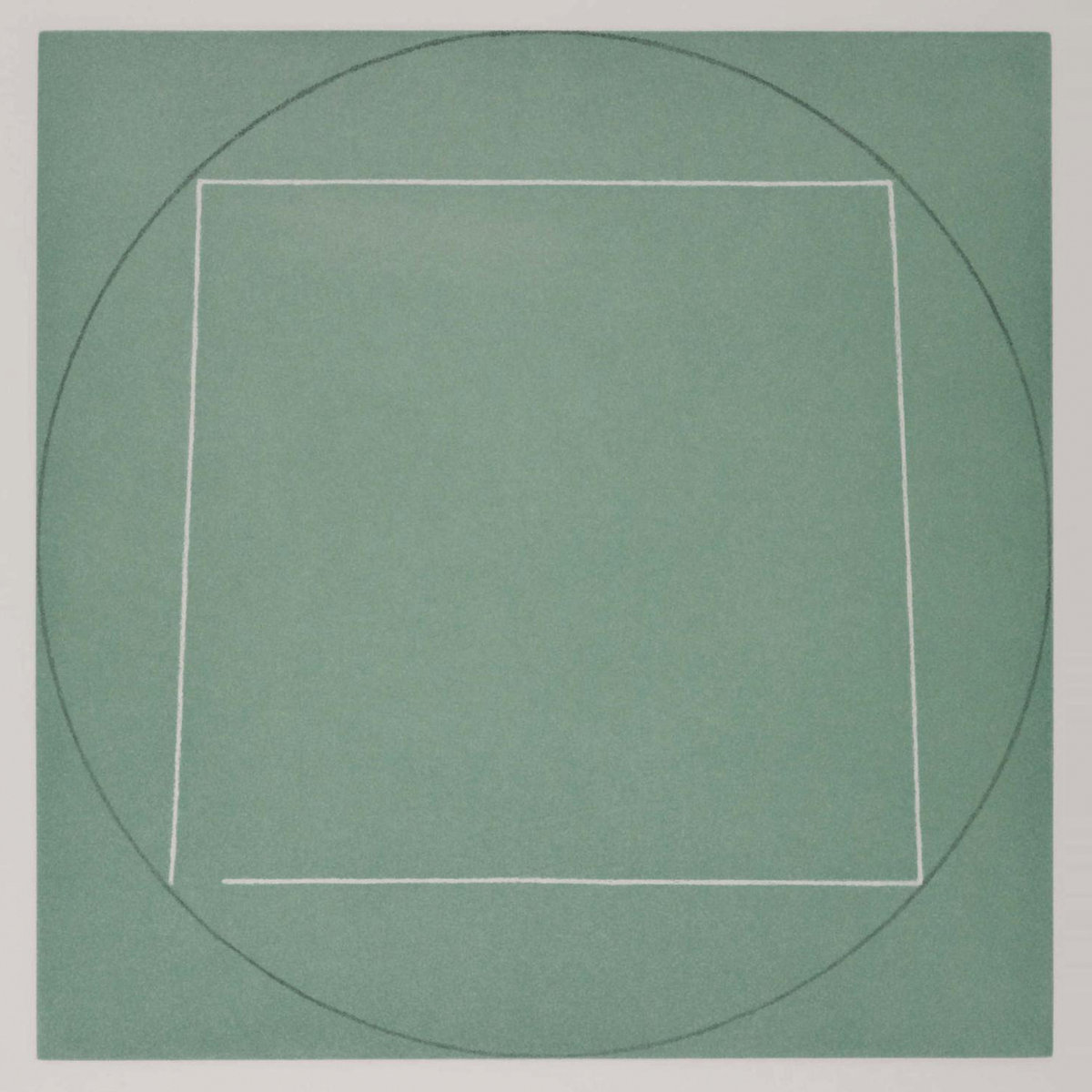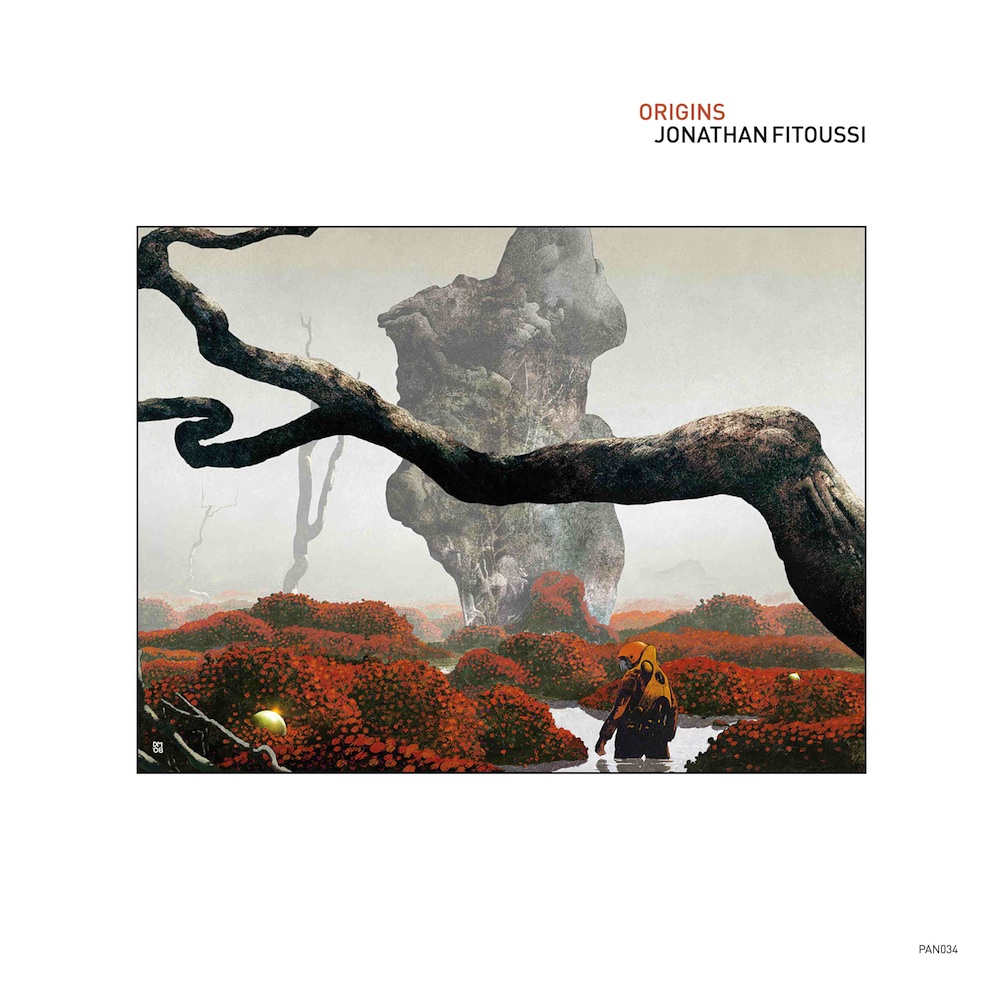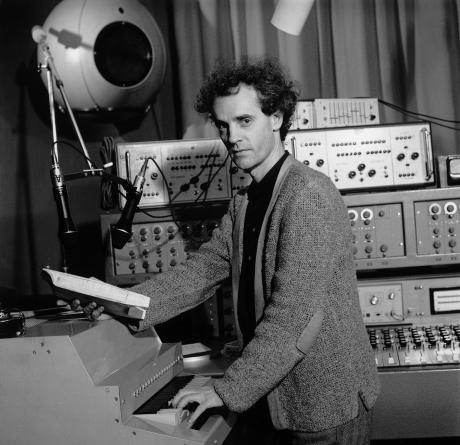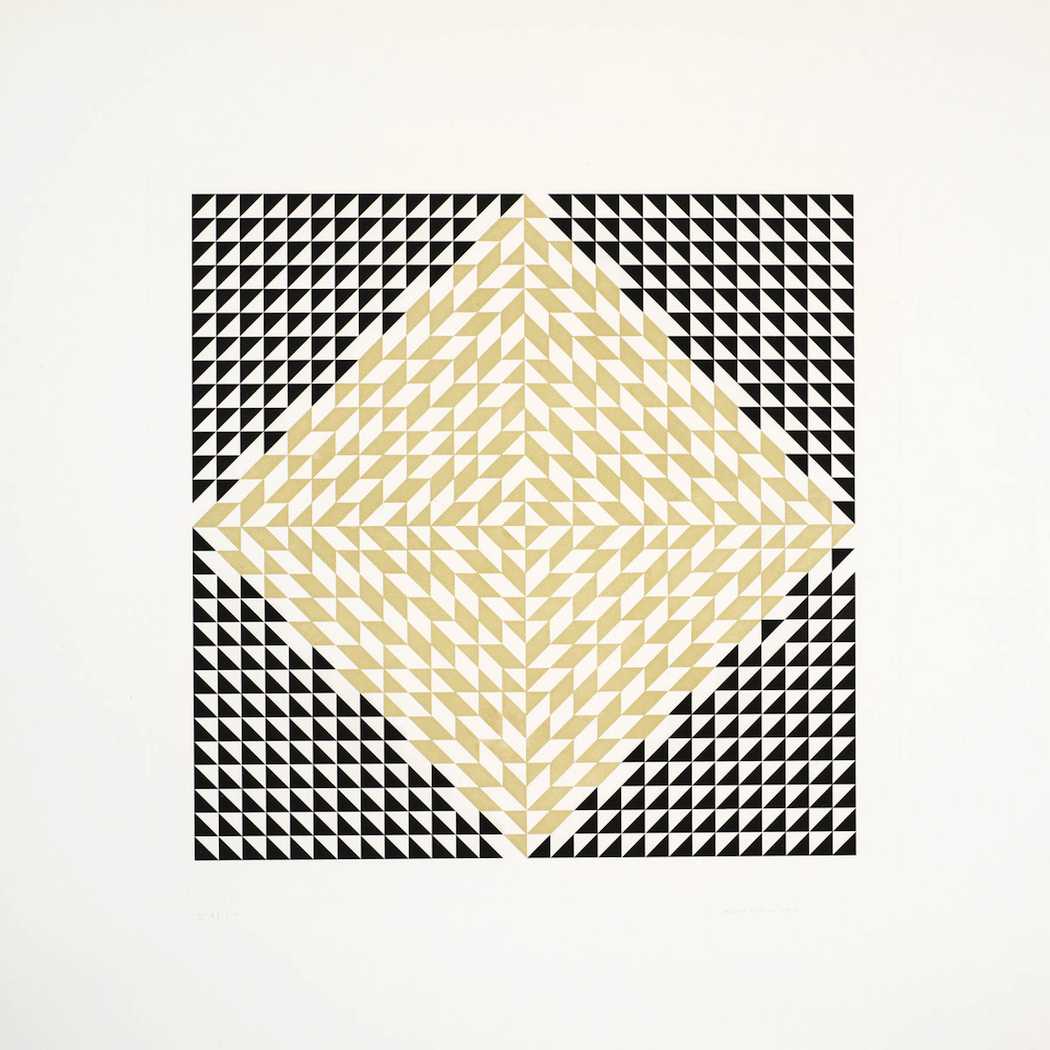*
RADIO

LES CARNETS DE LA CREATION par Aude Lavigne
Interview avec Jonathan Fitoussi.
*
ESPACES TIMBRES

3 years on, and after their first critically acclaimed album on Versatile, Five steps, who have been likened to the godfathers of the synthesizer genre (think Suzanne Ciani, François Bayle or Morton Subotnik and you’re almost there!) are back with « Espaces Timbrés » a brand new episode in their exploration of the legendary modular synthesizer – The Buchla, specially crafted for Versatile Records.
After 2 years of tireless work, ever pushing and furthering their musical research, Fitoussi and Hourrière reveal to us new
territories, textures, sounds and feelings to explore with the help of the equally legendary I:Cube on mixing duties to add even more sonic reflections and mixing desk wizardry.
This one’s a hyper-jump into the future made possible through a machine from the past, giving birth to those
most captivating of electronic mantras… dive in, the water’s warm!
*
IMAGINARY LINES

“The stars we are given. The constellations we make. That is to say, stars exist in the cosmos, but constellations are the imaginary lines we draw between them, the readings we give the sky, the stories we tell.” – Rebecca Solnit
The above quote by the American author Solnit inspired Parisian producer Jonathan Fitoussi’s debut album for Further Records, Imaginary Lines. He used those words and the concept of Harmony Of The Spheres to create the six ravishing interstellar evocations on Imaginary Lines, to spin his own intriguing yarns about the cosmos. While conjuring the vastness of space, Fitoussi imbues the journey with profound feelings of awe and beauty.
“With Imaginary Lines, I wanted to work with this idea as its core; on one hand geometrical and linear, like the shape of the constellations, characterized by the use of repetitive sequences, and on the other hand, through sections of improvised organ to evoke the more spiritual dimension, and l’invitation au voyage.”
Imaginary Lines sounds like it was made with acute academic rigor yet it is also lavishly beautiful and sensuous. “I like having a mixture of a solid base to work from,” Jonathan says, “which is characterized here by a repetitive sequence, that leaves room for improvisation as well. This is something that recurs often in my work: creating a stable structure which then allows me to create spaces within it. I also love architecture, with its lines and volumes, and I think this influences my work as a composer.” (…)
To manifest Imaginary Lines, Jonathan Fitoussi mainly employed an EMS Synthi AKS synthesizer and a Yamaha YC45D organ, which he processed through tape echo with two tape recorders. In addition, he says, “many of the sounds were also fed back into a large metallic resonator (similar to the Ondes Martenot), which produced beautiful reverberations.”
*
RADIO
CONTINENT MUSIQUES par Matthieu Conquet sur France Culture
Passé, présent et futur de la musique électronique avec en première partie d’émission, déambulation au cœur des machines et de l’évolution de l’électro à l’exposition Electrosound, du lab au dancefloor à la Fondation EDF avec le co-commissaire Jean-Yves Leloup, journaliste et auteur (Le Mot et le Reste) et le compositeur Jonathan Fitoussi.
Du Thérémine par Clara Rockmore au synthétiseur Buchla, en passant le Oramics Graphic Sound créé par Daphne Oram, une des pionnières de l’électro jusqu’au vocodeur utilisé par Kraftwerk, Continent Musiques explore tout un pan de l’histoire musicale, au gré des inventions sonores et matérielles.
*
ORIGINS

Eric Deshayes : À l’aube des temps était le chaos des énergies, des matières ordinaires et des matières noires.Le « cosmos » signifie « l’ordre », « l’ordonnancement de l’univers ».
Scruter au loin dans les méandres de la voûte céleste consiste à chercher des points de repères fixes au sein de figures évolutives et cycliques. Les Pythagoriciens, et Platon après eux, avaient initié l’idée d’une harmonie des sphères, un ordonnancement de l’univers selon des intervalles musicaux.
Ces principes ont éclos dans différentes cultures du monde et ont fait un long chemin à travers les siècles. Au cœur des années psychédéliques, de façon plus ou moins consciente, la musique minimaliste répétitive américaine, celle de La Monte Young et de Terry Riley en particulier, ainsi que les pionniers de la musique synthétique berlinoise, Klaus Schulze et Tangerine Dream, et bien d’autres aventuriers en électroacoustique, renouaient avec ces puissances évocatrices proprement cosmiques.
Jonathan Fitoussi s’inscrit avec intensité dans ce vaste champ exploratoire, de manière explicite par les titres donnés à ses pièces, par l’usage de mélodies cycliques, répétitives et de notes tenues.
Que ce soit à partir des oscillations de synthétiseurs, de l’acoustique pure d’un piano aux réverbérations suspendues dans l’espace-temps, de vibrations de cordes d’une guitare électrique, de tintements métalliques ou d’une mélodie d’orgue d’église, l’ensemble de ses pièces donnent à entendre et apprécier des sphères sonores fortement poétiques et planantes.
Comme des tracés sereins naviguant dans le Cosmos.
*
FIVE STEPS



» Toutes mes félicitations pour la délicate précision et la lisibilité parfaite des jeux. Beaucoup d’imagination des timbres, notamment pour Ice Stalactite.
En plus d’une belle retrouvaille sonore, c’est un moment de franche simplicité parmi la « nature des sons »
« Instants Ephemeres » est un bel hommage à Bernard Parmégiani. »
*
POLARIS

Eric Deshayes : Le hasard intersidéral de l’univers est constellé de phénomènes mathématiques purs, grandioses ellipses, courbes dantesques et autres circonvolutions majeures. La musique minimaliste répétitive, à laquelle Polaris rend hommage, est l’une des musiques qui représentent le mieux ces phénomènes astronomiques.
Son grand paradoxe est d’ouvrir par une stricte économie de moyens une richesse de perspectives incommensurables. Cette matière musicale touche l’être humain en profondeur par les sensations qu’elle procure. Le flux de pensées ininterrompues de notre esprit est entraîné sur des pentes vertigineuses crées par ces substances impalpables que sont les vibrations répétées.
En quête de sens, l’Américain Terry Riley improvisa parfois des nuits entières à partir de ces fascinants phénomènes de répétition évolutive. En France, le regretté Daniel Caux est celui qui l’a fait connaître, lui et les musiques hors-limites, notamment à travers le label Shandar. S’inspirant en particulier de Terry Riley, Jonathan Fitoussi a lui-même connu et travaillé avec Daniel Caux. Jonathan Fitoussi offrait — c’est bien d’une offrande dont il s’agit — un concert de musique minimaliste répétitive à La Blanchisserie de Boulogne-Billancourt le 27 octobre 2011, aux synthétiseurs et à l’orgue.
En voici la matière musicale, gravée sur un vinyle translucide glissé dans une pochette transparente, seulement sertie de tracés géométriques circulaires bleutés. Les effets de la musique sont psychoacoustiques, ceux du disque lui-même sont « psychoptiques », car cette surface est translucide, mais les sillons tracés réfractent les rayons lumineux. Lorsque le disque strié de sillons en hélices tourne sur lui-même l’impression est forte de voir sa vitesse de rotation varier en fonction du point de focale choisi. Et pourtant il tourne, à vitesse régulière.
*
PLURALIS

Hartzine
» Nous sommes une génération baignant dans l’héritage des grands défricheurs de la musique contemporaine. Peu d’artistes en ont pleinement conscience. Lui, oui : Jonathan Fitoussi sort un premier album de musique minimaliste exigeant dont la beauté rend hommage aux grands compositeurs du siècle passé. Jonathan est affilié aux artistes américains de la scène minimaliste comme Steve Reich ou Philip Glass, mais il revendique les techniques d’enregistrement analogique développées par les maîtres du GRM comme Pierre Schaeffer ou Pierre Henri. (…) .
Un jour, dans un studio de la radio, alors qu’il écoutait un enregistrement de drone qu’il avait réalisé sur un orgue d’église, il fit la rencontre de Daniel Caux, l’homme derrière le label mythique Shandar qui a transformé sa vision de la musique. Signe du destin ou heureuse coïncidence, Jonathan marche dans les pas de ses pères, et nous le suivrons jusque sur la lune(…) «
*
DIMENSIONS

Dimensions is a passively moving record of analogue psychedelia, taking straightforward and stubbornly hypnotic ideas and processing them through a constant synth symphony — like the best psych-tinged electronica, it moves as if it never begun and won’t ever finish. What secret makers of the record Model Alpha do, though, is more than just press start and watch the rhythms float: instead, they combine these sounds with a subtle affection for new wave that seems to make the music even more rigid, but in a totally different way. More melody, more secret pathways, but the same old sleepy ambient electronica.
Model Alpha use their krautish backdrop towards an almost numbing aesthetic, the synths locking into grooves early on and introducing rudimentary beats as a follow-up. The layering is calculated gorgeously, with tracks like “Circle Machine” enveloping the listener in a sound and then creasing tiny aspects of ambience over it (another synth squeak or the occasional wash) before subliminally introducing a beat. It’s a simple but effective way of both soothing and involving the listener, and it seems reflective of the group’s interest in symbolically explaining their synth circuits; listen the way their music passes through certain checkpoints without fail. Norman records

Joseph Ghosn : A kind of utopia. Just like the one found hidden away between the lines and pages of a few books, a few records that were born around the late sixties, early seventies. Those that spring in mind are by Terry Riley, Bridget Riley, Daniel Caux, Ariel Kalma. That sense of utopia which permeated their works is the one that was also found in the ideas and designs of the Bauhaus movement.Straight lines that, through a strange correspondence, are a reminder of the strong sound lines made by analog synthesizers.
Those played by Model Alpha, aka Jonathan Fitoussi & Julie Freyri, have synth names full of wonders, like a sesame password to an unknown hidden world : Sequential Circuits Pro-One, Ems Synthi AKS, Philicorda or Ondioline, Roland TR-606, TR-707…
Model Alpha makes them all vibrate, hiss, swirl, using them as they should with very clear sequences and straightforward percussion, but also as they shouldn’t. Synth and drumboxes heard on this record act as if they were taking you on a psychedelic drift, making you feel that they are almost playing themselves, creating their own melodies out of their used circuitry.
The great Anni Albers design used for the sleeve is another way of perceiving the duo’s electronic fluctuations : as straight hard lines that by sheer power of design and assemblage create illusions, make optic and audio nerves flutter away gently. Sound op art, in a subliminal way. Sometimes Kraftwerk overshadows the whole music and one can only feel that the young French duo shares with their German model that same sense of making electronic music as modern ragas, nurtured by urban sounds and decays as well as an Indian sense of timing.
Something for eternity, that goes on as long as electricity will be available. As with the best techno, the best minimalist records, the best krautrock ventures, this first Model Alpha LP hints at a weird sense of time, not totally of the past, not totally of the future, not at all of the present. Something in between, a time travel machine that can take you on a random journey. Listening to those tracks is a bit like making time’s flow stop. Right now.










